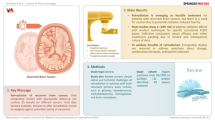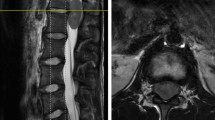Abstract
Objective
Radiation therapy is often advocated for residual or recurrent craniopharyngioma following surgical resection to prevent local recurrence. However, radiation therapy is not always effective and may render tumors more difficult to remove. If this is the case, patients may benefit more from reoperation if gross total resection can be achieved. Nevertheless, there is little data on the impact of radiation on reoperations for craniopharyngioma. In this study, we sought to analyze whether a history of previous radiation therapy (RT) affected extent of resection in patients with recurrent craniopharyngiomas subsequently treated with reoperation via endoscopic endonasal approach (EEA).
Methods
The authors reviewed a prospectively acquired database of EEA reoperations of craniopharyngiomas over 13 years at Weill Cornell, NewYork-Presbyterian Hospital. All procedures were performed by the senior author. The operations were separated into two groups based on whether the patient had surgery alone (group A) or surgery and RT (group B) prior to recurrence.
Results
A total of 24 patients (16 male, 8 female) who underwent surgery for recurrent craniopharyngioma were identified. The average time to recurrence was 7.64 ± 4.34 months (range 3–16 months) for group A and 16.62 ± 12.1 months (range 6–45 months) for group B (p < 0.05). The average tumor size at recurrence was smaller in group A (1.85 ± 0.72 cm; range 0.5–3.2) than group B (2.59 ± 0.91 cm; range 1.5–4.6; p = 0.00017). Gross total resection (GTR) was achieved in 91% (10/11) of patients in group A and 54% (7/13) of patients in group B (p = 0.047). There was a near significant trend for higher average Karnofsky performance status (KPS) score at last follow-up for group A (83 ± 10.6) compared with group B (70 ± 16.3, p = 0.056).
Conclusions
While RT for residual or recurrent craniopharyngioma may delay time to recurrence, ability to achieve GTR with additional surgery is reduced. In the case of recurrent craniopharyngioma, if GTR can be achieved, consideration should be given to endonasal reoperation prior to the decision to irradiate residual or recurrent tumor.
Similar content being viewed by others
Abbreviations
- RT:
-
Radiotherapy
- EEA:
-
Endonasal endoscopic approach
- GTR:
-
Gross total resection
- STR:
-
Subtotal resection
- KPS:
-
Karnofsky performance status
- BMI:
-
Body mass index
- CSF:
-
Cerebrospinal fluid
References
Bunin GR, Surawicz TS, Witman PA, Preston-Martin S, Davis F, Bruner JM (1997) The descriptive epidemiology of craniopharyngioma. Neurosurg Focus 3(6):e1
Caldarelli M, di Rocco C, Papacci F, Colosimo C Jr (1998) Management of recurrent craniopharyngioma. Acta Neurochir 140:447–454
Cappabianca P, Alfieri A, Colao A, Cavallo LM, Fusco M, Peca C et al (2000) Endoscopic endonasal transsphenoidal surgery in recurrent and residual pituitary adenomas: technical note. Minim Invasive Neurosurg 43:38–43
Cappabianca P, Cavallo LM, Esposito F, de Divitiis O, Messina A, de Divitiis E (2008) Extended endoscopic endonasal approach to the midline skull base: the evolving role of transsphenoidal surgery. Adv Tech Stand Neurosurg 33:151–199
Cavallo LM, Frank G, Cappabianca P, Solari D, Mazzatenta D, Villa A et al (2014) The endoscopic endonasal approach for the management of craniopharyngiomas: a series of 103 patients. J Neurosurg 121:100–113
Cavallo LM, Prevedello DM, Solari D, Gardner PA, Esposito F, Snyderman CH et al (2009) Extended endoscopic endonasal transsphenoidal approach for residual or recurrent craniopharyngiomas. J Neurosurg 111:578–589
Conger AR, Lucas J, Zada G, Schwartz TH, Cohen-Gadol AA (2014) Endoscopic extended transsphenoidal resection of craniopharyngiomas: nuances of neurosurgical technique. Neurosurg Focus 37(4):E10
Couldwell WT, Weiss MH, Rabb C, Liu JK, Apfelbaum RI, Fukushima T (2004) Variations on the standard transsphenoidal approach to the sellar region, with emphasis on the extended approaches and parasellar approaches: surgical experience in 105 cases. Neurosurgery 55:539–550
Dhandapani S, Singh H, Negm HM, Cohen S, Souweidane MM, Greenfield JP et al (2017) Endonasal endoscopic reoperation for residual or recurrent craniopharyngiomas. J Neurosurg 126(2):418–430
Dhandapani S, Negm HM, Cohen S, Anand VK, Schwartz TH (2015) Endonasal endoscopic transsphenoidal resection of tuberculum sella meningioma with anterior cerebral artery encasement. Cureus 7:e311
Duff J, Meyer FB, Ilstrup DM, Laws ER Jr, Schleck CD, Scheithauer BW (2000) Long-term outcomes for surgically resected craniopharyngiomas. Neurosurgery 46:291–305
Elliott RE, Hsieh K, Hochm T, Belitskaya-Levy I, Wisoff J, Wisoff JH (2010) Efficacy and safety of radical resection of primary and recurrent craniopharyngiomas in 86 children. J Neurosurg Pediatr 5:30–48
Fahlbusch R, Honegger J, Paulus W, Huk W, Buchfelder M (1999) Surgical treatment of craniopharyngiomas: experience with 168 patients. J Neurosurg 90:237–250
Fischer EG, Welch K, Jr SJ, Winston KR, Tarbell NJ (1990) Craniopharyngiomas in children. Long-term effects of conservative surgical procedures combined with radiation therapy. J Neurosurg 73:534–540
Gardner PA, Kassam AB, Snyderman CH, Carrau RL, Mintz AH, Grahovac S et al (2008) Outcomes following endoscopic, expanded endonasal resection of suprasellar craniopharyngiomas: a case series. J Neurosurg 109:6–16
Gautier A, Godbout A, Grosheny C, Tejedor I, Coudert M, Courtillot C et al (2012) Markers of recurrence and long-term morbidity in craniopharyngioma: a systematic analysis of 171 patients. J Clin Endocrinol Metab 97:1258–1267
Jane JA Jr, Laws ER (2006) Craniopharyngioma. Pituitary 9:323–326
Jose CC, Rajan B, Ashley S, Marsh H, Brada M (1992) Radiotherapy for the treatment of recurrent craniopharyngioma. Clin Oncol (R Coll Radiol) 4:287–289
Karavitaki N, Brufani C, Warner JT, Adams CB, Richards P, Ansorge O et al (2005) Craniopharyngiomas in children and adults: systematic analysis of 121 cases with long-term follow-up. Clin Endocrinol 62:397–409
Karavitaki N, Cudlip S, Adams CB, Wass JA (2006) Craniopharyngiomas. Endocr Rev 27:371–397
Kim SK, Kim YH, Park CK, Kim DG, Jung HW (2014) Extended endoscopic endonasal approach for recurrent or residual adult craniopharyngiomas. Acta Neurochir 156:1917–1922
Kalapurakal JA, Goldman S, Hsieh YC, Tomita T, Marymont MH (2000) Clinical outcome in children with recurrent craniopharyngioma after primary surgery. Cancer J 6:388–393
Kassam AB, Gardner PA, Snyderman CH, Carrau RL, Mintz AH, Prevedello DM (2008) Expanded endonasal approach, a fully endoscopic transnasal approach for the resection of midline suprasellar craniopharyngiomas: a new classification based on the infundibulum. J Neurosurg 108:715–728
Klimo P Jr, Venable GT, Boop FA, Merchant TE (2015) Recurrent craniopharyngioma after conformal radiation in children and the burden of treatment. J Neurosurg Pediatr 15:499–505
Kobayashi T, Mori Y, Tsugawa T, Hashizume C, Takahashi H (2012) Prognostic factors for tumor recurrence after gamma knife radiosurgery of partially resected and recurrent craniopharyngiomas. Nagoya J Med Sci 74:141–147
Komotar RJ, Starke RM, Raper DM, Anand VK, Schwartz TH (2012) Endoscopic endonasal compared with microscopic transsphenoidal and open transcranial resection of craniopharyngiomas. World Neurosurg 77:329–341
Koutourousiou M, Gardner PA, Fernandez-Miranda JC, Tyler-Kabara EC, Wang EW, Snyderman CH (2013) Endoscopic endonasal surgery for craniopharyngiomas: surgical outcome in 64 patients. J Neurosurg 119:1194–1207
Lee CC, Yang HC, Chen CJ, Hung YC, Wu HM, Shiau CY, et al. (2014) Gamma knife surgery for craniopharyngioma: report on a 20-year experience. J Neurosurg 121 Suppl:167–178
Leng LZ, Brown S, Anand VK, Schwartz TH (2008) “Gasket-seal” watertight closure in minimal-access endoscopic cranial base surgery. Neurosurgery 62(2 Suppl):342–343
Leng LZ, Greenfield JP, Souweidane MM, Anand VK, Schwartz TH (2012) Endoscopic, endonasal resection of craniopharyngiomas: analysis of outcome including extent of resection, cerebrospinal fluid leak, return to preoperative productivity, and body mass index. Neurosurgery 70:110–124
Liubinas SV, Munshey AS, Kaye AH (2011) Management of recurrent craniopharyngioma. J Clin Neurosci 18:451–457
Minamida Y, Mikami T, Hashi K, Houkin K (2005) Surgical management of the recurrence and regrowth of craniopharyngiomas. J Neurosurg 103:224–232
Mortini P, Losa M, Pozzobon G, Barzaghi R, Riva M, Acerno S et al (2011) Neurosurgical treatment of craniopharyngioma in adults and children: early and long-term results in a large case series. J Neurosurg 114:1350–1359
Prieto R, Pascual JM, Subhi-Issa I, Jorquera M, Yus M, Martínez R (2013) Predictive factors for craniopharyngioma recurrence: a systematic review and illustrative case report of a rapid recurrence. World Neurosurg 79:733–749
Schoenfeld A, Pekmezci M, Barnes MJ, Tihan T, Gupta N, Lamborn KR et al (2012) The superiority of conservative resection and adjuvant radiation for craniopharyngiomas. J Neuro-Oncol 108:133–139
Stagno V, Cappabianca P (2013) Which side tips the scale for recurrent craniopharyngiomas? World Neurosurg 79:647–648
Šteňo J, Bízik I, Šteňo A, Matejčík V (2014) Recurrent craniopharyngiomas in children and adults: long-term recurrence rate and management. Acta Neurochir 156:113–122
Takano S, Akutsu H, Mizumoto M, Yamamoto T, Tsuboi K, Matsumura A (2015) Neuroendoscopy followed by radiotherapy in cystic craniopharyngiomas-a long-term follow-up. World Neurosurg 84:1305–1315, 1315.e1–1315.e2
Turel MK, Tsermoulas G, Gonen L, Klironomos G, Ameida JP, Zadeh G, Gentili F (2016) Management and outcome of recurrent adult craniopharyngiomas: an analysis of 42 cases with long-term follow-up. Neurosurg Focus 41(6):E11
Van Effenterre R, Boch AL (2002) Craniopharyngioma in adults and children: a study of 122 surgical cases. J Neurosurg 97:3–11
Weiner HL, Wisoff JH, Rosenberg ME, Kupersmith MJ, Cohen H, Zagzag D et al (1994) Craniopharyngiomas: a clinicopathological analysis of factors predictive of recurrence and functional outcome. Neurosurgery 35:1001–1011
Wen BC, Hussey DH, Staples J, Hitchon PW, Jani SK, Vigliotti AP et al (1989) A comparison of the roles of surgery and radiation therapy in the management of craniopharyngiomas. Int J Radiat Oncol Biol Phys 16:17–24
Yaşargil MG, Curcic M, Kis M, Siegenthaler G, Teddy PJ, Roth P (1990) Total removal of craniopharyngiomas. Approaches and longterm results in 144 patients. J Neurosurg 73:3–11
Author information
Authors and Affiliations
Corresponding author
Ethics declarations
Conflict of interest
The authors declare that they have no conflict of interest.
Ethical approval
All procedures performed in studies involving human participants were in accordance with the ethical standards of the institutional review board and with the 1964 Helsinki declaration and its later amendments or comparable ethical standards. For this type of study, formal consent is not required.
Rights and permissions
About this article
Cite this article
Younus, I., Forbes, J.A., Ordóñez-Rubiano, E.G. et al. Radiation therapy rather than prior surgery reduces extent of resection during endonasal endoscopic reoperation for craniopharyngioma. Acta Neurochir 160, 1425–1431 (2018). https://doi.org/10.1007/s00701-018-3567-z
Received:
Accepted:
Published:
Issue Date:
DOI: https://doi.org/10.1007/s00701-018-3567-z




